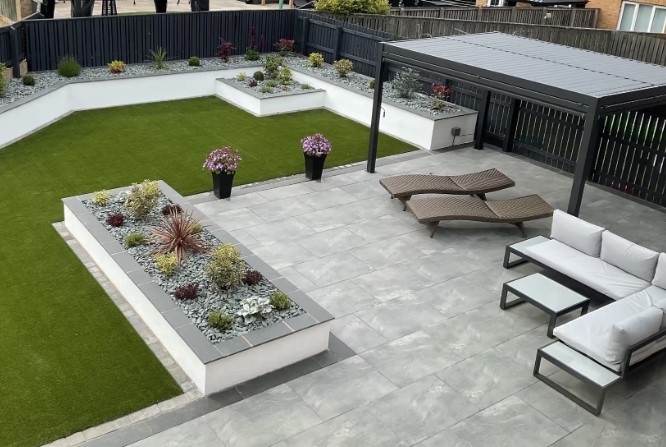
Garden Design
Introduction
Designing a garden is like painting a masterpiece. It takes creativity, planning, and a bit of know-how to turn a blank canvas of soil into a beautiful, thriving space. Whether you have a small backyard or a vast estate, garden design can transform your outdoor area into a personal paradise.
What is Garden Design?
Garden design is the art and process of creating plans for the layout and planting of gardens and landscapes. It involves the careful selection and placement of plants, hardscape elements, water features, and lighting to create a cohesive and aesthetically pleasing outdoor space.
The Importance of Garden Design
Why is garden design so crucial? Well, a well-designed garden not only enhances the beauty of your home but also provides a sanctuary for relaxation, improves air quality, and can even increase your property value. Moreover, a thoughtfully planned garden can create a habitat for local wildlife and promote sustainability.
Planning Your Garden
Assessing Your Space
The first step in garden design is to assess your space. Take note of the size, shape, and conditions of your garden area. Consider factors like sunlight, soil type, and existing features. This initial assessment will guide your design decisions and help you choose plants and features that will thrive in your garden.
Determining Your Garden Style
Choosing a garden style sets the tone for your design. Here are a few popular styles to consider:
Formal Gardens
Formal gardens are characterized by symmetrical layouts, geometric shapes, and neatly trimmed hedges. Think of the classic English or French gardens with their meticulous attention to detail.
Informal Gardens
Informal gardens, on the other hand, embrace a more natural and relaxed look. They often feature winding paths, irregular shapes, and a variety of plant types that blend harmoniously.
Contemporary Gardens
Contemporary gardens focus on simplicity and modern design elements. Clean lines, minimalist plantings, and innovative materials are the hallmarks of this style.
Creating a Garden Plan
With your garden style in mind, it’s time to create a plan.
Sketching Your Garden Layout
Start by sketching a rough layout of your garden. Mark the locations of existing trees, shrubs, and other significant features. Then, decide where to place new elements like flower beds, pathways, and seating areas.
Choosing Plants and Features
Select plants that complement your garden style and thrive in your climate. Consider their growth habits, bloom times, and maintenance needs. Additionally, think about incorporating features like arbors, pergolas, or water elements to add interest and structure to your garden.
Essential Elements of Garden Design
Understanding Plant Types
A successful garden design hinges on the right mix of plant types. Here are the main categories:
Annuals
Annuals are plants that complete their life cycle in one growing season. They are perfect for adding bursts of color and filling in gaps in your garden.
Perennials
Perennials come back year after year, providing structure and consistency to your garden. They often have longer bloom periods and can be a backbone of your design.
Shrubs and Trees
Shrubs and trees add height, privacy, and permanence to your garden. They can be used to create focal points, provide shade, or act as windbreaks.
The Role of Hardscaping
Hardscaping refers to the non-plant elements in your garden. These features can define spaces, create paths, and add functionality.
Pathways and Patios
Pathways guide visitors through your garden and can be made from a variety of materials like gravel, brick, or stone. Patios provide areas for relaxation and entertainment.
Fences and Walls
Fences and walls can offer privacy, security, and structure. They can also serve as a backdrop for plants and create distinct garden rooms.
Water Features
Water features add a soothing and dynamic element to your garden. Consider these options:
Ponds
Ponds can create a tranquil environment and attract wildlife. They range from small, container water gardens to large, naturalistic ponds.
Fountains
Fountains provide the sound of running water, which can be both calming and invigorating. They come in various styles, from classic tiered designs to modern sculptures.
Garden Lighting
Lighting extends the usability of your garden into the evening hours and highlights key features. Use a mix of ambient, task, and accent lighting to create a balanced and inviting atmosphere.
Design Principles to Follow
Balance and Symmetry
Achieving balance in your garden involves creating a sense of equality and harmony. Symmetry can be used in formal designs, while asymmetrical balance works well in informal settings.
Color and Texture
The interplay of color and texture adds depth and interest to your garden. Use a color wheel to select complementary colors and mix plants with different leaf shapes and surface textures.
Scale and Proportion
Scale and proportion ensure that the elements in your garden relate well to each other and to the overall space. Consider the mature size of plants and the dimensions of hardscape features to maintain harmony.
Garden Maintenance Tips
Watering and Irrigation
Consistent watering is essential for a healthy garden. Consider installing an irrigation system or using soaker hoses to ensure your plants receive the right amount of water.
Pruning and Trimming
Regular pruning and trimming help maintain the shape and health of your plants. Remove dead or diseased branches and shape shrubs and trees to encourage new growth.
Pest Control
Keep an eye out for pests that can damage your plants. Use organic or chemical treatments as needed, and consider attracting beneficial insects that prey on harmful pests.
Conclusion
Bringing it all together, garden design is a blend of art and science. It requires careful planning, an understanding of plants and materials, and a bit of creativity. Whether you’re starting from scratch or revamping an existing garden, these principles and tips will help you create a beautiful, functional outdoor space that you can enjoy for years to come.
FAQs
What is the best time to start planning a garden?
The best time to start planning a garden is in the fall or early winter. This gives you ample time to prepare the soil, select plants, and design the layout before the growing season begins.
How can I make a small garden look larger?
To make a small garden look larger, use techniques like vertical gardening, creating distinct zones, using mirrors, and choosing plants with lighter foliage to reflect light.
What are some low-maintenance garden ideas?
For a low-maintenance garden, choose native plants, incorporate drought-tolerant species, use mulch to retain moisture, and install an automated irrigation system.
How do I choose the right plants for my garden?
Choose plants based on your climate, soil type, and the amount of sunlight your garden receives. Also, consider the plant’s growth habit, maintenance needs, and aesthetic appeal.
Can I design a garden on a budget?
Yes, you can design a garden on a budget by starting small, using seeds or cuttings instead of mature plants, repurposing materials, and focusing on perennial plants that come back every year.
